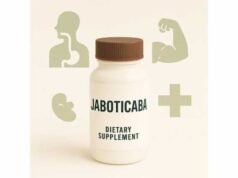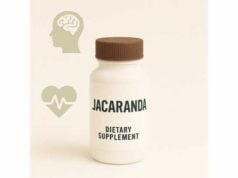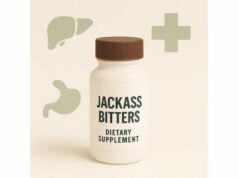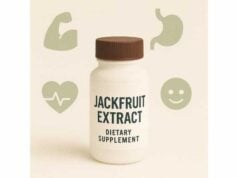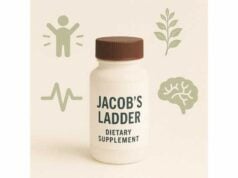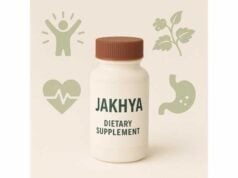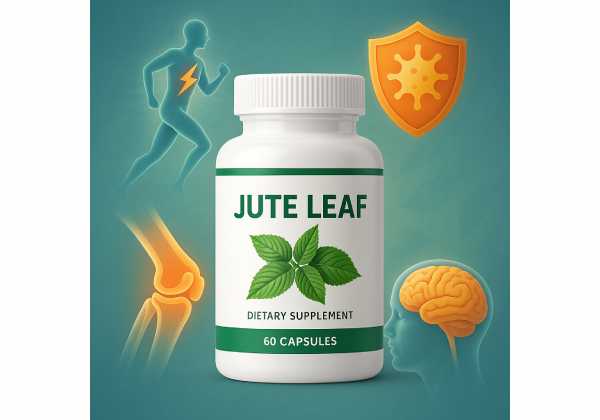
Jute leaf (Corchorus olitorius)—also known as molokhia, Jew’s mallow, or bush okra—is a traditional leafy vegetable prized across North Africa, the Middle East, and parts of Asia. Beyond its silky, okra-like texture and savory flavor in soups and stews, jute leaf is rich in beta-carotene (provitamin A), vitamin C, vitamin E, folate, and minerals such as calcium and iron. Its mucilaginous polysaccharides and polyphenols contribute antioxidant and soothing, demulcent effects that many people find helpful for digestion. Modern lab and animal studies suggest potential support for healthy blood sugar and lipids, as well as anti-inflammatory activity—though high-quality human trials are limited. In the kitchen, it’s versatile: steam fresh leaves, simmer frozen or dried molokhia, or add powdered leaf to broths and smoothies. As a supplement, extracts and teas are used, but dosing is not standardized. This guide walks you through what the science actually shows, how to use jute leaf safely, and where the evidence still needs to catch up.
Key Insights
- Rich source of provitamin A, vitamin C and E, folate, calcium and iron; naturally mucilaginous.
- Early evidence in animals suggests support for healthy blood sugar and lipids; human trials are sparse.
- Typical culinary serving: ~100–200 g cooked leaves; tea 2–3 g dried leaf per cup, up to 2–3 cups/day.
- Concentrated extracts lack standardized dosing; start low (e.g., 500–1,000 mg/day of leaf powder) and assess tolerance.
- Avoid high-dose supplements if pregnant, breastfeeding, on warfarin or other anticoagulants, or with oxalate kidney stones.
Table of Contents
- What is jute leaf?
- Benefits and what actually works
- How to use it day to day
- Choosing products and quality
- Side effects and who should avoid it
- Evidence check and research gaps
What is jute leaf?
Jute leaf comes from Corchorus olitorius, a fast-growing herb in the mallow family traditionally cultivated for both edible leaves and fiber. In the kitchen, it’s a staple in dishes such as Egyptian molokhia and Levantine mulukhiyah, where its gentle viscosity thickens broths like a natural roux. That texture reflects soluble, mucilaginous polysaccharides—complex carbohydrates that swell with water and can coat and soothe the gastrointestinal lining.
From a nutrition perspective, jute leaf is dense for a leafy green. Analyses consistently report high levels of carotenoids (notably beta-carotene), vitamin C and E, folate, and minerals including calcium, iron, potassium, and magnesium. These nutrients cluster with an array of polyphenols (e.g., chlorogenic, caffeic, and ferulic acids), flavonoids (quercetin, kaempferol derivatives), and phytosterols that contribute antioxidant activity. The combination of fiber plus polyphenols is relevant: fiber helps slow glucose absorption and binds bile acids, while polyphenols can modulate enzymes and signaling tied to oxidative stress and inflammation.
Two practical properties matter in everyday use. First, jute’s viscosity increases when it’s steamed or gently simmered, releasing more soluble fiber into the dish. Second, its delicate vitamins (especially vitamin C) are heat-sensitive and water-soluble; short cooking times and minimal water contact help retain them. Steaming or quick simmering preserves both micronutrients and polyphenols better than prolonged boiling. Dried and frozen forms retain much of the plant’s value when processed and cooked properly, offering year-round access.
As a supplement, you’ll find jute leaf offered as whole-leaf powder, teas, or ethanolic/water extracts. Labels may emphasize antioxidant capacity, blood sugar support, or general wellness. Because nutrient and phytochemical content varies by cultivar, soil conditions, and processing, product quality and standardization differ widely. The take-home: enjoy it as a food first; think of supplements as concentrated adjuncts where dosing should start low and be guided by tolerance, medical conditions, and healthcare advice.
Benefits and what actually works
Antioxidant and anti-inflammatory support. Laboratory assays consistently show that jute leaf contains phenolic acids (chlorogenic, ferulic, caffeic), flavonoids (quercetin, luteolin derivatives), and carotenoids that neutralize free radicals and modulate inflammatory signaling. Cooking method matters: steaming and gentle sautéing tend to increase measured total phenolics and antioxidant activity compared with raw or boiled preparations, likely by releasing bound compounds while minimizing leaching into water. In practical terms, if you’re aiming for antioxidant support, aim for steamed leaves folded into soups or grains rather than prolonged boiling.
Glycemic and lipid effects (preclinical). In rodent models of diet-induced obesity and type 2 diabetes, jute leaf extracts have been associated with lower fasting glucose and triglycerides, reductions in LDL-cholesterol, and increases in HDL-cholesterol. Proposed mechanisms include slowed carbohydrate digestion (via alpha-amylase/alpha-glucosidase modulation), improved insulin signaling, and fiber-mediated bile acid binding. These findings are promising but not definitive for people. They make a stronger case for including jute leaf as part of an overall high-fiber, plant-forward diet rather than relying on high-dose extracts to “fix” metabolic issues.
Digestive comfort and mucosal soothing. The same viscous polysaccharides that give jute its silky mouthfeel can act as demulcents—substances that coat and soothe irritated tissues. While much of the evidence comes from traditional use and general knowledge about mucilaginous plants, many individuals report gentler digestion when they incorporate small amounts of cooked jute into meals. For those sensitive to slimy textures, pairing with lemon, garlic, and spices, or blending into soups, can balance mouthfeel.
Skin and wound applications (early-stage). Topical and experimental work in animals suggests that Corchorus extracts may promote aspects of wound repair and barrier function. Translating that to clinical skincare is premature, but it does hint at why jute leaf appears in some traditional poultices and modern soothing creams. As always, patch-test any topical product and consult a clinician for chronic skin concerns.
Micronutrient repletion in food-first contexts. Because jute leaf is rich in folate, vitamin C, beta-carotene, and calcium, it can help plug common dietary gaps—especially in individuals who eat few leafy greens. Pairing with a small amount of fat (e.g., olive oil) supports carotenoid absorption. Citrus or tomato boosts iron uptake from plant sources due to vitamin C.
What we do not yet know. Robust, placebo-controlled human trials are scarce. We lack standardized dosing for extracts, and the relative contributions of fiber vs. polyphenols to metabolic endpoints in humans remain unclear. Until clinical data catch up, the most evidence-aligned advice is to use jute leaf primarily as a nutrient-dense food, with cautious, low-dose exploration of supplemental forms only when needed and supervised.
How to use it day to day
Culinary uses (best-supported, most practical).
- Steamed or quick-simmered: Add washed leaves to a steamer basket for 3–5 minutes, or simmer in broth for 5–8 minutes until tender and slightly viscous. Fold into soups, stews, or grain bowls.
- Frozen or dried molokhia: Convenient for year-round cooking; simmer 5–10 minutes in stock with aromatics (garlic, coriander, cumin) and a squeeze of lemon.
- Smoothie or soup booster: Stir 1–2 teaspoons of leaf powder into hot soups or blend 1 teaspoon into a savory smoothie; the texture thickens liquids gently.
Dosing as food. A typical culinary portion is about 100–200 g cooked leaves per serving (roughly 1–1½ cups, depending on chop and cooking method). When eaten several times per week, this can contribute meaningful amounts of beta-carotene, vitamin C, folate, and calcium alongside fiber.
Herbal tea (infusion). For a mild, food-level preparation: use 2–3 g dried leaf (about 1–2 teaspoons) per 250 ml cup, steep in just-off-boil water for 8–10 minutes, and drink up to 2–3 cups per day as tolerated. Tea will emphasize demulcent and gentle digestive effects; it will not deliver the full nutrient density of a plate of cooked greens.
Powders and capsules. If using a whole-leaf powder (no added concentrates), a conservative starting range is 500–1,000 mg/day, taken with food and water. Increase gradually toward 2,000–3,000 mg/day only if well tolerated and desired for convenience—not as a substitute for vegetables on the plate. Because products vary, always follow the specific label and consult a clinician if you have chronic conditions or take medications.
Extracts. Ethanol or water extracts concentrate specific polyphenols and may be labeled by extraction ratio (e.g., 10:1) or marker compounds. There is no clinically standardized human dose. Begin conservatively (e.g., a product’s lowest suggested serving), and treat extracts like you would a new herbal supplement: introduce one at a time, keep a simple log of dose and response, and reassess after 2–4 weeks.
Cooking to maximize value.
- Prefer steaming or quick simmering over long boiling to preserve antioxidants and vitamins and avoid leaching into cooking water.
- Add a splash of oil (olive or avocado) to enhance carotenoid absorption.
- Squeeze lemon or add tomato near the end to support iron uptake and brighten flavor.
- If sensitive to mucilage, chop finely, cook with acid (lemon, vinegar), and combine with other greens to balance texture.
Storage and prep. Fresh leaves keep 2–3 days in the fridge. Blanching and freezing retain color and much of the phytonutrient content for up to 3 months. Dried leaves and powders should be stored in airtight, opaque containers away from heat and moisture.
Choosing products and quality
Forms on the market. You’ll see whole dried leaves, freeze-dried or spray-dried powders, tea cut, and standardized extracts (water or hydroalcoholic). Some culinary brands sell frozen chopped molokhia; supplement brands offer capsules or loose powder.
Label literacy.
- Part used: Look for leaf specifically; blends with stem or seed change the profile.
- Processing: Freeze-dried and gently processed powders tend to retain more color and aroma—proxies for phytonutrients. Avoid products that look dull brown or smell stale.
- Standardization: Few products quote marker compounds (e.g., total phenolics, chlorogenic acid). If an extract lists markers and solvent system, that’s a quality signal, though not a guarantee of efficacy.
- Additives: Choose short ingredient lists (leaf or extract plus capsule). Be cautious with unnecessary fillers, flavors, or unlabeled “proprietary blends.”
Purity and safety. As a leafy crop, jute can concentrate soil contaminants if grown in poor conditions. Prefer brands that test for heavy metals (lead, arsenic, cadmium, mercury), pesticide residues, and microbial counts, and that make certificates of analysis available on request. Culinary frozen products from reputable producers typically undergo quality controls comparable to other vegetables.
Sustainability and sourcing. Jute leaf grows well in warm climates with modest inputs; many smallholders cultivate it as a nutrient-dense, fast-turnover crop. When possible, support producers who disclose country of origin, farming practices, and fair trade commitments.
When to choose food vs. supplement.
- Choose food if your goal is better nutrient intake, fiber, and culinary enjoyment.
- Consider a supplement only for convenience or targeted support when you cannot regularly cook jute leaf, and after discussing with a clinician if you have medical conditions, are pregnant/breastfeeding, or take medications.
Red flags. Avoid products that promise cures, list unrealistic dosages, or lack basic transparency (no lot number, no company contact, no testing).
Side effects and who should avoid it
General tolerance. When eaten as a vegetable in typical portions, jute leaf is widely consumed and generally well tolerated. The most common minor reactions are digestive (gas, fullness) due to its soluble fiber and mucilage—often improved by smaller portions, thorough cooking, and adequate hydration.
Possible side effects with concentrated forms.
- Gastrointestinal: Nausea, loose stools, or cramping may occur with large doses of powder or extracts. Reduce dose or pause and reintroduce at a lower level.
- Allergy: Rarely, individuals sensitive to plants in the mallow family may react; discontinue if rash, itching, or respiratory symptoms occur.
- Kidney stone risk: Leafy greens contribute oxalates. If you have a history of calcium-oxalate stones, limit portions, use cooking methods that reduce oxalate (boil then drain occasionally), and coordinate with your clinician.
- Blood sugar: Because of potential glucose-lowering effects of extracts in animal models, people on antidiabetic medications should monitor glucose more closely when starting supplements.
- Blood clotting: Leafy greens provide vitamin K, which can antagonize warfarin. Maintain a consistent intake pattern and consult your anticoagulation clinic before making changes.
- Electrolytes and diuretics: Traditional uses include mild diuretic effects; if you take diuretics, watch for dizziness or cramps when starting supplements.
Who should avoid or seek medical advice first.
- Pregnant or breastfeeding individuals: Food amounts are generally considered customary; avoid concentrated extracts due to insufficient safety data.
- People on warfarin or other anticoagulants: Keep intake consistent and involve your clinician.
- Individuals with oxalate kidney stones: Limit portions and prefer cooked preparations; avoid high-dose powders.
- Those with significant GI disease (IBD flares, strictures): Introduce slowly; mucilage can be soothing for some and bloating for others—personalize with medical supervision.
- Children: Use food forms in age-appropriate portions; avoid supplements unless recommended by a pediatric clinician.
Interactions to keep in mind. Vitamin C and acids (lemon, tomato) increase non-heme iron absorption, which is beneficial for many people but not for those who must limit iron; pair foods accordingly. Fiber can bind medications if taken simultaneously—separate supplements or medicines and fiber-rich meals by 2–4 hours when feasible.
Stop and seek care if you experience persistent GI distress, hives, swelling, breathing difficulty, signs of bleeding, or any concerning symptoms after introducing jute leaf supplements.
Evidence check and research gaps
What is well established.
- Jute leaf is nutrient-dense, delivering notable amounts of provitamin A, vitamin C and E, folate, calcium, and iron for relatively few calories.
- The plant is rich in polyphenols and flavonoids, which exhibit strong antioxidant capacity in vitro.
- Cooking method influences measurable phytochemical retention and activity. Steaming in particular tends to maximize total phenolics and antioxidant readings compared with boiling, likely due to minimal leaching.
What is promising but preliminary.
- Metabolic effects: Rodent studies suggest improvements in fasting glucose, lipid panels (lower TG and LDL, higher HDL), and markers of oxidative stress and inflammation after jute leaf extract intake. Mechanistic hypotheses include modulation of carbohydrate-digesting enzymes, antioxidant activity, and fiber-mediated effects on bile acids and lipid absorption.
- Dermatologic/wound applications: Experimental models indicate potential for enhanced wound closure or barrier function with topical preparations; specific actives and human dosing remain to be clarified.
What is unknown or inconsistent.
- Human clinical trials: There is a lack of large, well-controlled trials examining metabolic, inflammatory, or dermatologic outcomes in people.
- Standardized dosing: Extracts are not harmonized for marker compounds, making dose-response comparisons difficult.
- Bioavailability: We need human studies that map how cooking styles, fat pairing, and the food matrix influence absorption of carotenoids and polyphenols from jute leaf.
- Long-term safety of concentrates: Food use is longstanding; chronic use of high-dose extracts has not been rigorously studied in diverse populations.
Practical bottom line. Treat jute leaf as a food-first strategy for micronutrient density and fiber. If using supplements, start low, prioritize quality, and personalize based on health context and clinician guidance. For people seeking metabolic support, pair jute leaf with broader nutrition and lifestyle measures known to help—consistent fiber intake, balanced protein, movement, and sleep—while the clinical research on this specific plant evolves.
References
- Pharmacological and phytochemical biodiversity of Corchorus olitorius 2022 (Systematic Review)
- Effect of Common Cooking and Drying Methods on Phytochemical and Antioxidant Properties of Corchorus olitorius Identified Using Liquid Chromatography-Mass Spectrometry (LC-MS) 2022
- Corchorus olitorius extract exhibit anti-hyperglycemic and anti-inflammatory properties in rodent models of obesity and diabetes mellitus 2023 (Systematic Review)
- A Comprehensive Review of C. capsularis and C. olitorius: A Source of Nutrition, Essential Phytoconstituents and Pharmacological Activities 2022 (Systematic Review)
- Unveiling the Chemical Composition, Bioactive Profile and Antioxidant Capacity of Dried Egyptian Jew’s Mallow Stems as a Promising Anticancer Agent 2024
Disclaimer
This article is educational information about jute leaf (Corchorus olitorius). It is not medical advice and does not replace care from your physician or other qualified health professional. Nutritional and herbal products can interact with medications and health conditions. Always consult your healthcare provider before starting, stopping, or changing any supplement, particularly if you are pregnant or breastfeeding, managing a chronic condition, or taking prescription drugs.
If you found this guide helpful, please consider sharing it with friends or on Facebook, X (formerly Twitter), or any platform you prefer, and follow us for future updates. Your support helps us continue creating clear, evidence-informed resources.

